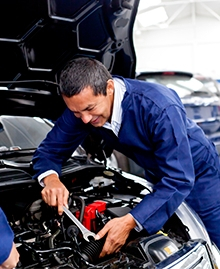Discover the EU Norms and the Technology That Complies with Them
Emission standards are becoming stricter with time, and clean air zones are starting to limit older vehicles from entering major city centres. But how is all this decided? European emission regulations known as “the Euro Emission Standards” have determined how vehicles must control their emissions. Even after Brexit, these standards continue to affect vehicles sold in the UK. In this 30-minute free webinar, you will learn everything you need to know about the Euro standards.
The Rationale Behind Clean Air Zones
Vehicle emissions have long been a culprit for poor air quality in major urban centres around the world. This pollution has caused numerous adverse effects on public health and the climate. While emission norms have played an important role in responding to this challenge, cities like London have gone one step further and implemented clean air zones. These areas charge polluting vehicles a fee to enter, subjecting certain vehicles to stricter norms than others. This approach discourages the use of older, more polluting vehicles in defined areas and has demonstrably decreased pollution since implementation. Still, clean air zones aren’t the only reason urban air pollution has dropped.
The History of Euro Emission Norms
Before the Euro Emission Standards were adopted, pollution was much worse in European cities. Over time, these standards have evolved to become more stringent with each generation. Today, Euro 6 is currently the strictest pollution standard. It is required for certain vehicles to enter city centres, but some less polluting vehicles are allowed to get by with Euro 4 or even Euro 3. Euro 7 emission standards may come soon to further reduce emissions produced by combustion-powered cars. So how are emissions produced in the first place?
The Mechanics of Pollution
When combustion engines burn fuel, various pollutants and particulate matter are emitted into the atmosphere in the exhaust. While it may seem like one individual vehicle doesn’t pollute enough to make a difference, the emissions of millions of vehicles in a single city can add up quickly. Thankfully, technology has reduced these emissions, and the stricter Euro 6 emission standards are even more effective.
How Different Vehicles Filter Pollutants
Petrol and diesel are chemically different fuels, so their engines combust differently and produce different pollutants. Therefore, these different engine types can’t use the same technologies to control their emissions. Components like catalytic converters are designed to eliminate certain pollutants but wouldn’t be effective on vehicles that require Exhaust Gas Recirculation (EGR), for example.
In fact, emissions technology can vary from one diesel engine to another. One reason is as Euro emission standards have become stricter, requiring more complex technology to meet new norms. This added complexity means that today, Euro 6 emissions-compliant vehicles need several sensors to detect the exhaust emissions in real-time and adjust the engine’s performance accordingly.
What You Will Learn in Our Webinar
In this webinar, you will learn:
- What are the different types of automation
- Which technologies power automated driving
- The history and the future of automation




